In this article
You’ve noticed your baby is doing more moving and grooving than they had been previously. They might not be crawling quite yet, but many of the signs are there that they’re ready to start. So what can you do to encourage them to start crawling independently? Well, believe it or not, there are certain toys for crawlers that pique their interest enough to really motivate them to move.
We’ll cover everything your want to know about getting your almost-crawler to this next exciting stage. From signs that your baby is ready to crawl, to the best types of toys to help propel them forward.
Ready to crawl: Safety first

Before we jump into when your baby starts crawling, let’s talk a little about how to make sure your baby stays safe once they maneuver about. Because they’re curious and exploring the world through literally everything, and we mean everything, they can get their hands on.
Make sure the basic babyproofing has been taken care of. This means keeping hot items out of reach, outlets are covered, and small toys your baby might be tempted to put in their mouth aren’t easy to grab. Also, pay attention to loose cords, sharp edges, and make sure anything they might pull themselves up is securely attached to the wall. Now that you’ve baby-proofed hazards your little one might encounterd, let’s talk about when babies start to crawl.
When do babies start to crawl?
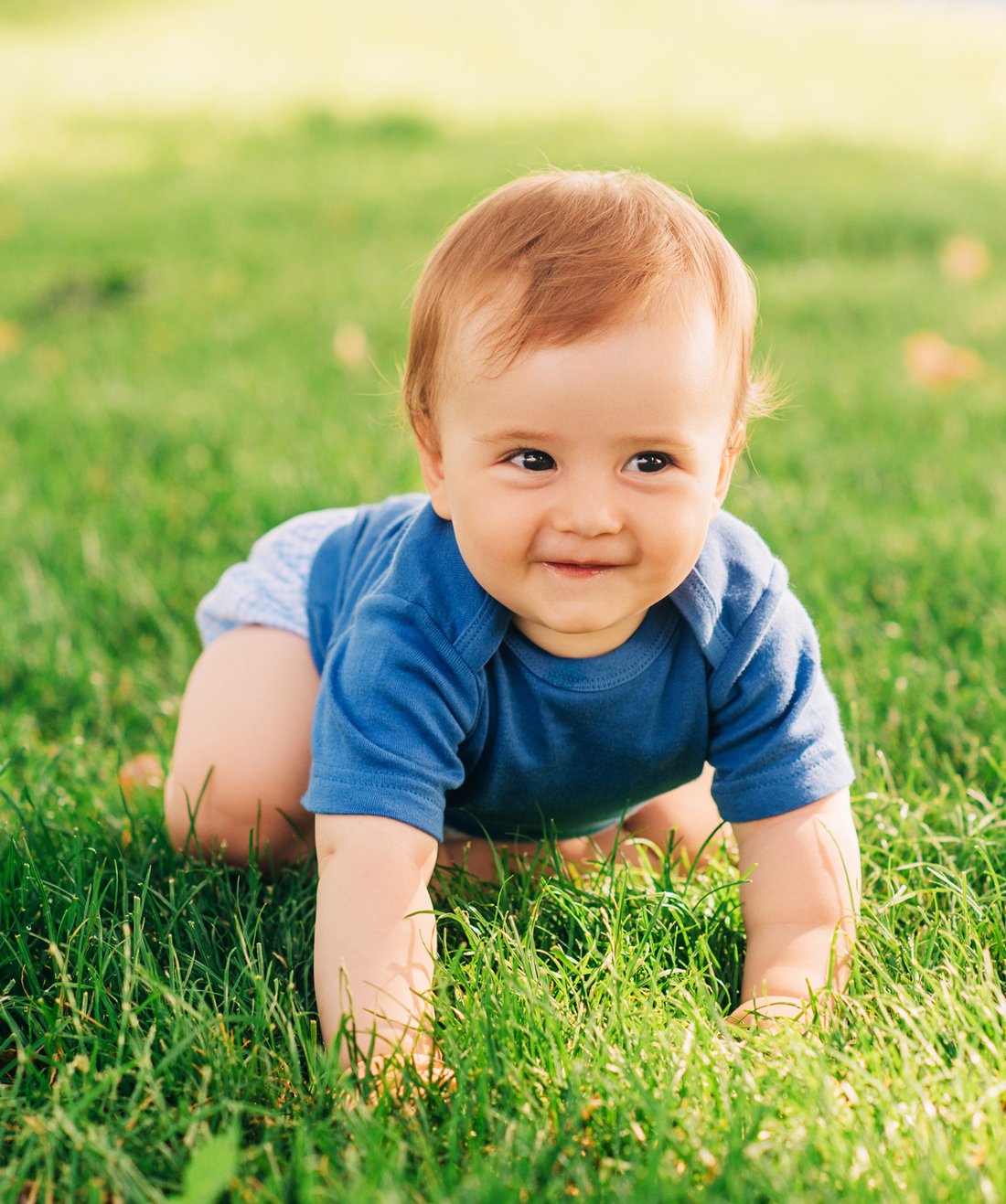
If you’ve heard it once, you’ve heard it a million times — every baby is different. But usually, you might expect your baby to start crawling between 7 to 10 months old. Of course, some kiddos do more of an army crawl or skip it altogether. If this happens, don’t worry about it too much as long as it’s not accompanied by other concerns. “Technically, if a child has some way to get from point A to point B, it satisfies the (crawling) milestone. Some kids never crawl, and some kids go straight from scooting to cruising or walking,” Corey Fish, MD, told Verywell Family.
Aside from seeing your baby zip on by chasing a toy or following the family pet around the house, there are other signs your baby is ready to crawl. Before a baby starts crawling, they’ll have mastered other physical milestones like rolling back and forth from back to tummy. They also might find themselves able to get up on their hands and knees, but don’t necessarily put one knee in front of the other to get going. Developing strength in their core and other limbs involved in crawling is essential to making their next move.
“It always made me giggle when my daughter would just rock and sway back and forth when she was learning to crawl. She’d always get stuck in what looked like a goofy yoga position, but once she figured it out, it was so exciting and was ready to go.” Danielle H, mom of two, shared with Mom.com.
Roll and follow toys when your baby starts to crawl

These can be as simple as a fun vehicle or silly animal on wheels, or as complex as a motorized jiggling ball or doll that crawls. The idea is to give your baby something interesting to crawl after; as a bonus, many of these toys can be rolled back and forth between you and your baby to promote coordination and manual dexterity, two things babies need to become crawlers.
Buy it! Hape Walk Along Puppy Pull, $35; amazon.com
Play mats to explore
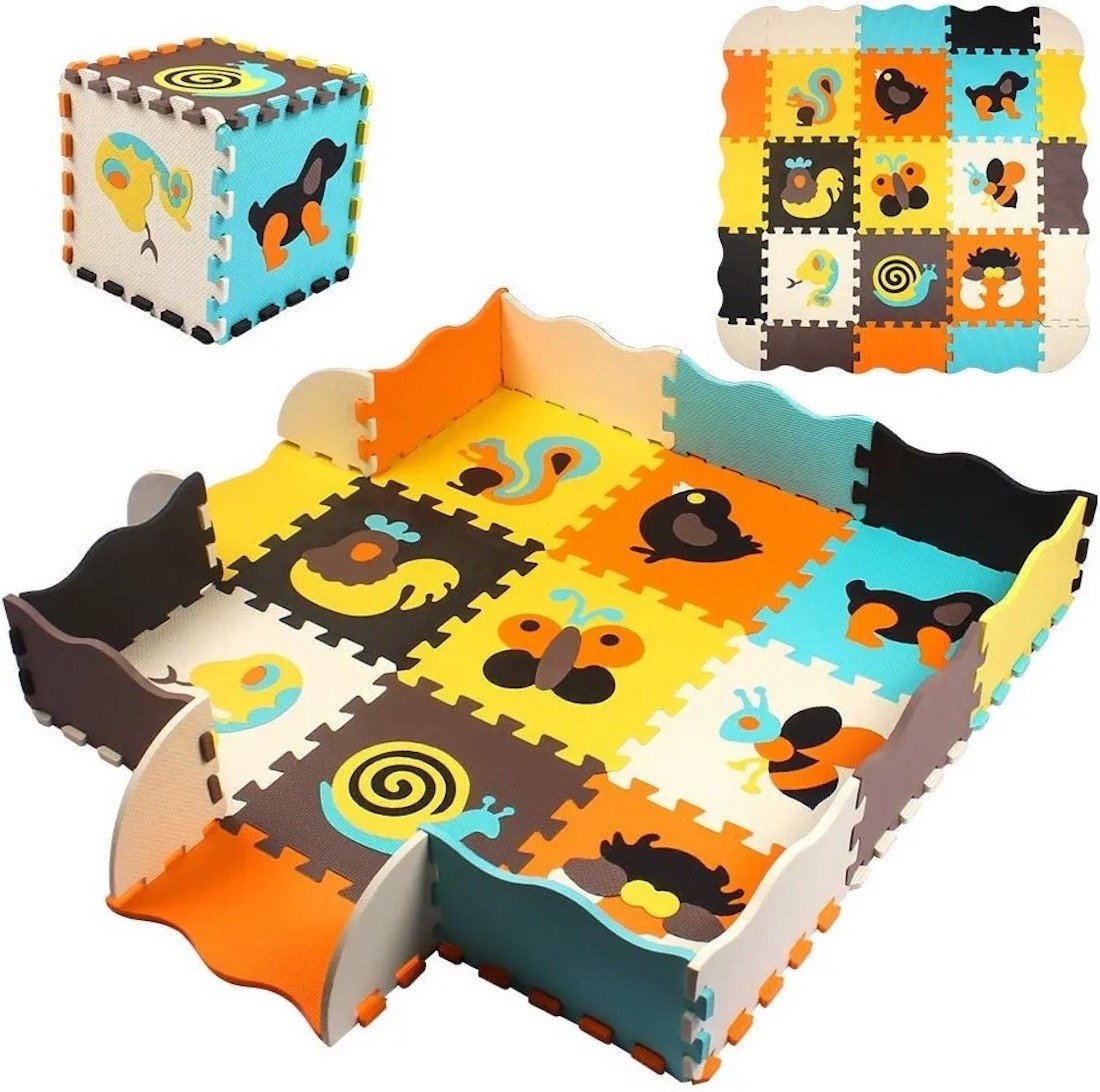
Play mats provide a clean, soft, easy-to-transport surface for crawling, whether you’re at home or on the go. In addition to providing a safe spot for practice, many mats also include features like crinkly flaps or squeaky attachments that encourage your baby to go investigate and play!
Buy it! StillCool Baby Play Mat, $27; amazon.com
Tunnels for when there are signs your baby is ready to crawl
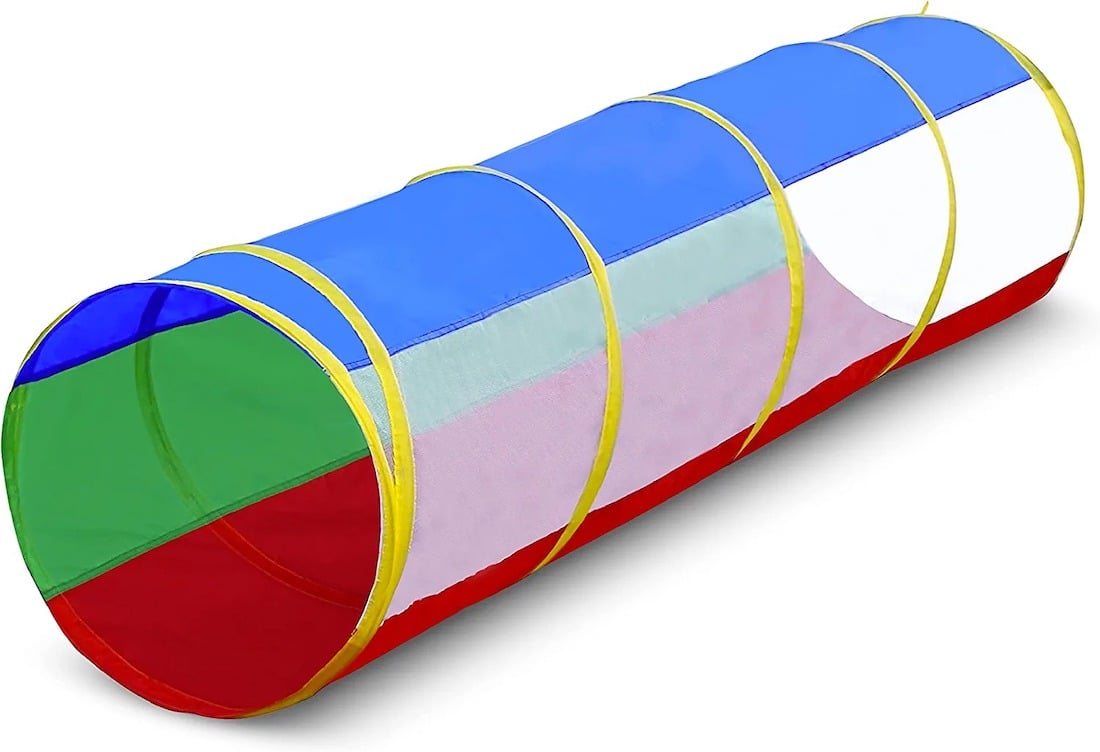
Like play mats, tunnels offer another novel, safe environment for practicing this new way to travel. Your baby will be curious simply to find out what it’s like inside and to see what’s at the other end, but tunnels are also great to use along with other toys; roll a ball through it or place a toy they love at the opposite end and watch them go!
Buy it! Hide N Side 6ft Crawl Through Play Tunnel, $20;l amazon.com
Mirrors to encourage crawling
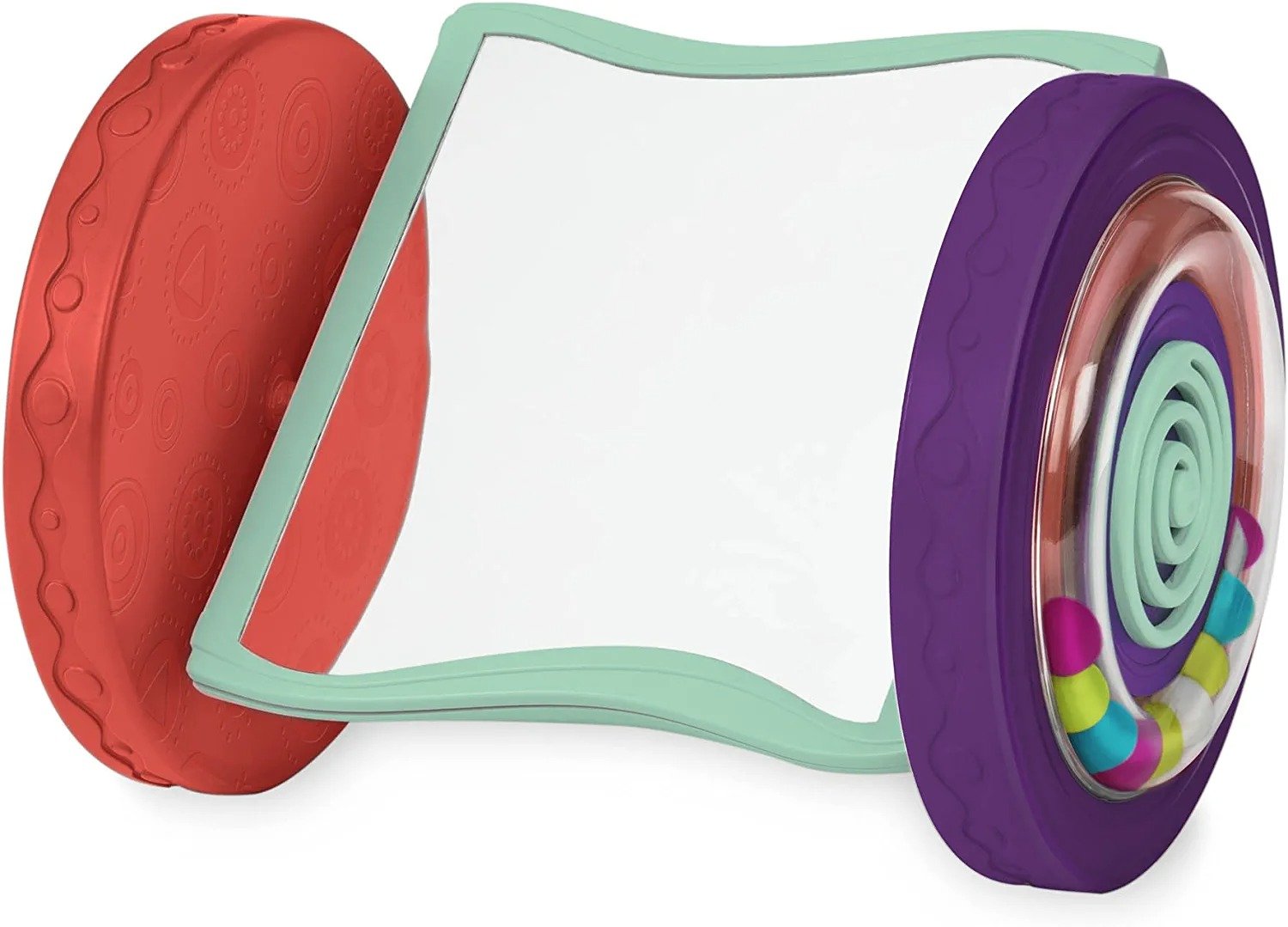
Babies are naturally drawn to faces, so why not use that to your advantage by encouraging your child to crawl toward one of the cutest faces around — their own! Make sure you’re only using unbreakable child-safe mirrors, which come in a variety of styles that can be easily set up on the floor at baby’s eye level.
Buy it! B. Baby Activity Mirror, $16; amazon.com
How do you help your baby start to crawl? Give them blocks

These are often thought of as a toy to keep stationary, sitting babies occupied, but don’t underestimate your baby’s desire to destroy things! Stack up some colorful, baby-approved blocks and show them how much fun they are to knock down. You might be surprised at how quickly they come over to do it on their own!
Buy it! Melissa & Doug Wooden Building Blocks Set, $28; amazon.com
Cause and effect toys for moving and grooving
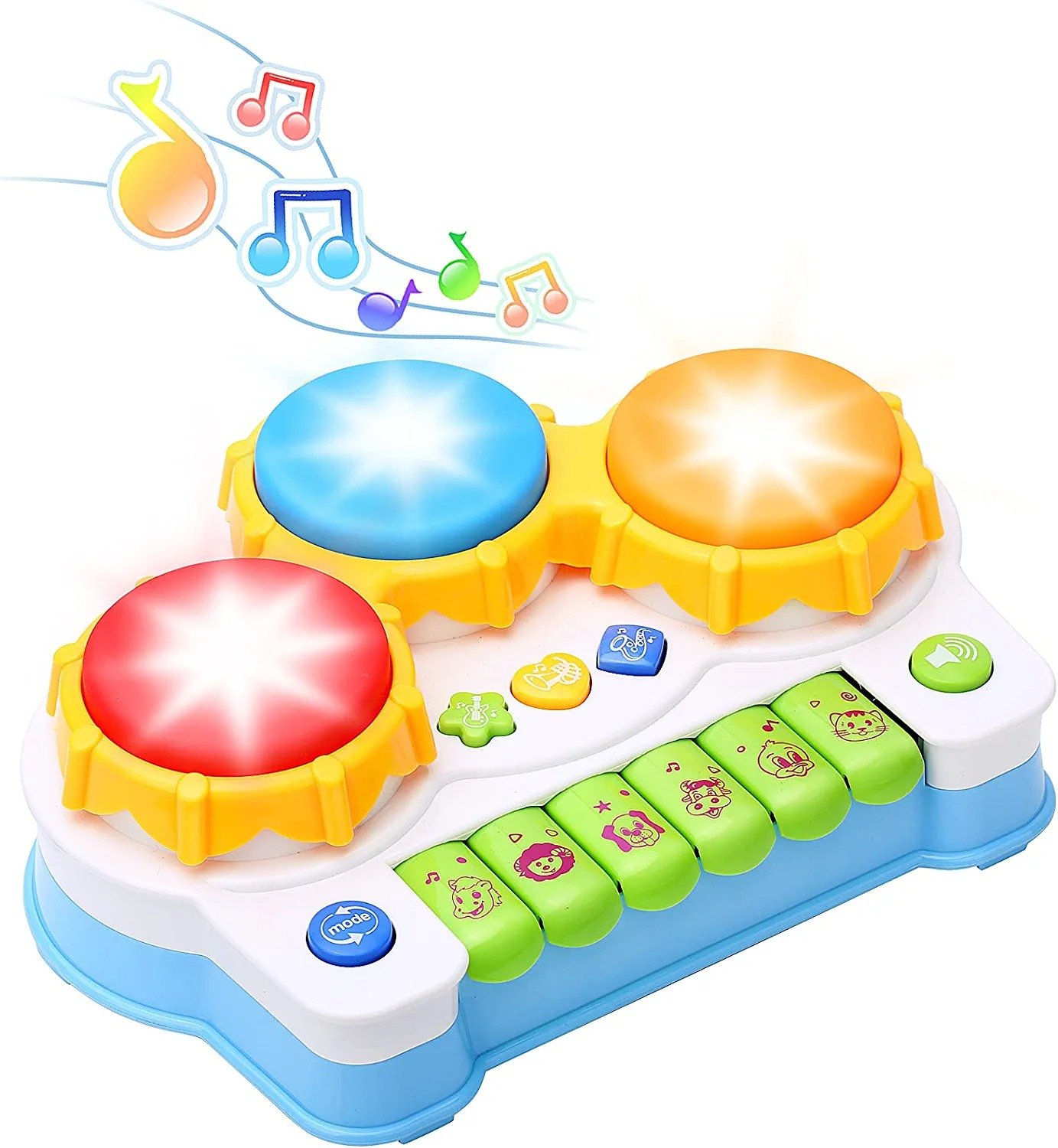
Anything that lights up when a button is pushed, makes a sound in response to your baby’s movement, or has some other direct response to their activity is great for budding crawlers when placed just out of reach. Babies love action/reaction toys, so getting that interaction will motivate them to crawl over and see what happens next.
__Buy it! __KingsDragon Baby Musical Set, $33; amazon.com
Stationary play centers are great toys for crawlers that can continue to encourage movement in the future

Larger toys like learning tables and activity cubes can grow with your child, encouraging early sit-and-play activities, providing incentive for crawling, and later, helping your baby pull to stand and cruise. They might take up more floor space or be a bit pricier than other toys, but the extra months of use you’ll get out of them are well worth it.





